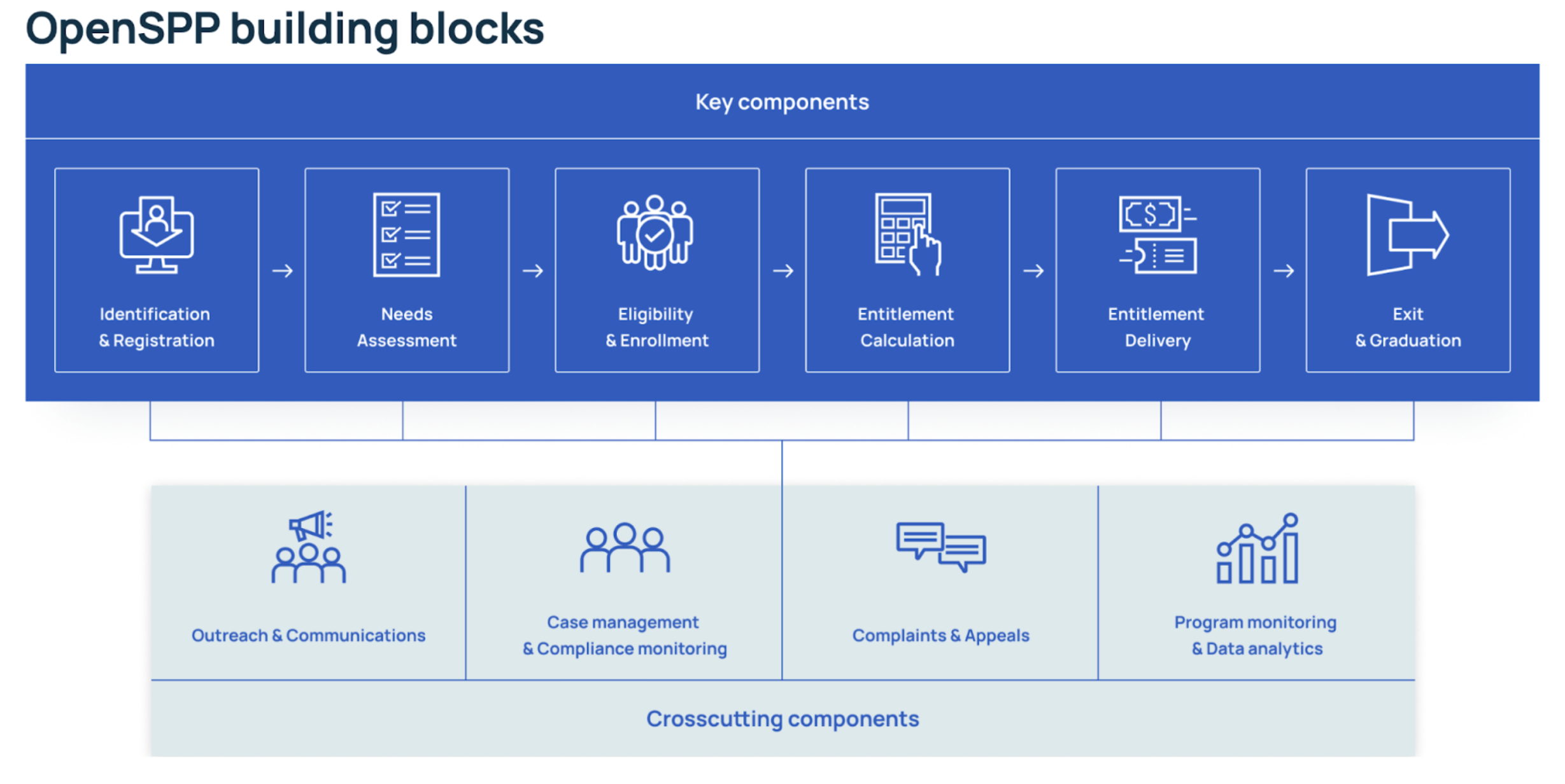Welcome to OpenSPP!
Contents
Welcome to OpenSPP!#
OpenSPP was created to support the improvement and growth of effective social protection and humanitarian programs using open-source technologies. Our goal is to make it easier and more cost effective for governments and humanitarian agencies to digitalize their social protection systems.
OpenSPP is an open-source, modular and highly interoperable platform. The platform offers four main products: SP-MIS - a comprehensive management information system - plus a Social Registry, a Farmer Registry and a Disability Registry.
OpenSPP is a Digital Public Good. It is built on more than 60 open-source modules, and leverages and contributes to other open-source projects including OpenG2P, MOSIP, OpenCRVS, Odoo, Payment Hub EE, ID PASS, CommCare, Metabase and OpenFn
SP-MIS#
OpenSPP’s social protection management information system offers customizable building blocks for effective program implementation. Its modular design allows users to select only the components they need without an overhaul of existing systems.

Farmer Registry#
The Farmer Registry stores and manages farm holding and farm owner data, supporting coordination between the social and agricultural sectors. It supports mass registrations and regular updates, and integrates data from Geographic Information Systems, national ID and CRVS.
Disability Registry#
The Disability Registry is an organized database for systematically recording and managing information about individuals with disabilities within a specific population or geographic area. It contains important information to facilitate services and assistance for people with disabilities, including access to social protection programs. OpenSPP is set to release its open-source Disability Registry in the second quarter of 2024.
Guiding principles#
Our guiding principles are informed by the Digital Public Goods Standard and the Principles for Digital Development.
User-centricity: Our products are designed to be intuitive and pragmatic, recognizing that social protection operates in complex, resource-constrained and rapidly changing contexts.
Modularity: The platform is composed of independent modules which allow for flexibility, scalability, and the interchangeability of components.
Privacy and security: We rigorously uphold privacy and security standards - essential prerequisites for safeguarding Digital Public Goods.
Interoperability: The platform is designed to support system interoperability - critical for the creation of cohesive and efficient digital ecosystems.
Inclusivity: Our products can be customized to suit linguistic and cultural requirements, accessibility, digital literacy, and deployment in remote and less-developed contexts.
To begin using the platform, head to the Getting Started section for an overview of how OpenSPP’s documentation is organized, and how to locate relevant information.
OpenSPP is currently in development, and everything is evolving rapidly thanks to the input provided by our users. If you have any questions or needs, please do not hesitate to contact the team through Github issues or the OpenSPP website.
 openspp.org
openspp.org
Social Registry#
The Social Registry is a repository for the storage and management of data for planning and administering social protection. It supports intake, dynamic registration and needs assessment, and the efficient and secure sharing of data from the social registry with various social protection programs and services.